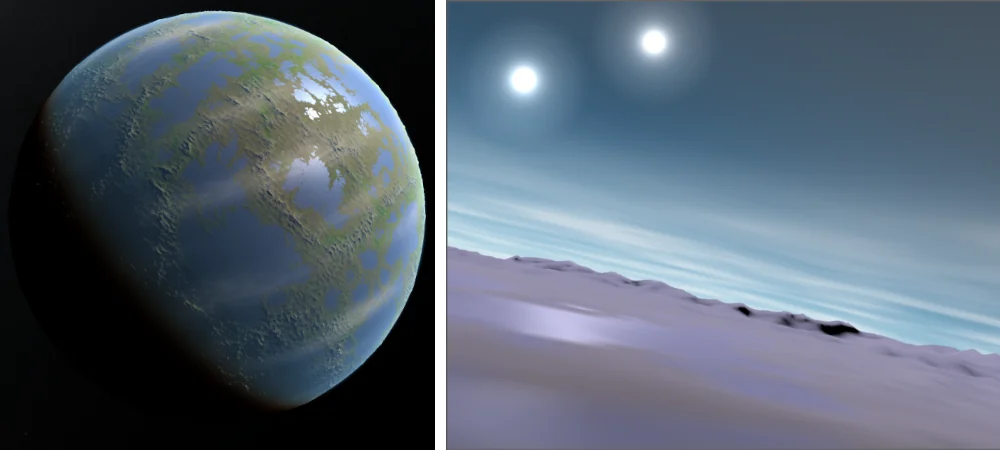Tag: Opengl
Sparse Virtual Textures
A technical description of my implementation of Sparse Virtual Textures in Gaia Sky

Real time rendering of the Earth in Gaia Sky with surface, cloud and height virtual textures.
Implementing proper virtual texture support in Gaia Sky has been on my to-do list for many years. And for many years I have feared that very item, as the virtual texture mechanism is notoriously complex and hard to implement. However, once working, they are very cool and bring a lot of value to software like Gaia Sky. In this post, I describe and discuss my implementation of virtual textures in Gaia Sky in detail, and provide a thorough examination of some of its most interesting points. If you are looking for the specifics of how to define or use virtual texture datasets in Gaia Sky, please refer to the official documentation. Here I provide only a general technical description.
Procedural Generation of Planetary Surfaces
Generating realistic planet surfaces and moons
Edit (2024-07-08): We have written a new post to expand on this one. Check it out here.
Edit (2024-06-26): As of Gaia Sky 3.6.3, the procedural generation process has been moved to the GPU. Even though the base method is the same, a number of things have changed from what is described here. For instance:
- The generation is now almost instantaneous, even with high resolutions.
- Gradval and Value noise are no longer available.
- Voronoi and Curl noise are now available.
- The process takes into account a temperature layer.
- We have introduced terraces, with the respective parametrization.
I have recently implemented a procedural generation system for planetary surfaces into Gaia Sky. In this post, I ponder about different methods and techniques for procedurally generating planets that look just right and explain the process behind it in somewhat detail. This is a rather technical post, so be warned. As a teaser, the following image shows a planet generated using the processes described in this article.

Left: a wide view of a procedurally generated planet. Right: the same planet viewed from the surface.
Variable Stars and New Render Systems
What is currently going on in Gaia Sky development?
In the past few weeks I have been implementing a couple of features into Gaia Sky. The first is the addition of variable star rendering. The second is the re-implementation of all point cloud render systems to use actual geometry (triangles) instead of point primitives. This post briefly offers a preview of these features.
What's New in Gaia Sky 3.1
Short rundown of what's in this major release
Over the last two weeks I have released the feature-packed version 3.1.0 of Gaia Sky. Two bugfix releases (3.1.1 and 3.1.2) followed shortly to fix bugs and regressions introduced in the former. This post contains a small rundown of the most interesting features in these three new versions. Let’s get started.
In this post, I’m mirroring the Gaia Sky 3 tutorial I wrote for the official Gaia Sky documentation to use as a rough script for the workshop given in a splinter session of the 2021 DPAC consortium online meeting held on March 17 and 18, 2021. You can find the original page here.
Hint
This article is best viewed in light mode: lights on!
Gaia Sky 3
Dramatic performance improvements and lots of new features in Gaia Sky 3
It’s been a while since I last talked about new Gaia Sky releases. Today I’m doing a recap of the last four releases, starting with 3.0.0. This very verison came out with Gaia eDR3 on Dec 3, 2020. It was a big jump for Gaia Sky, as it introduced a plethora of new features and QOL improvements along with lots of bug fixes and little tweaks. This post goes over the latest versions from 3.0.0 to 3.0.3, and reflects on what they brought to the table.
Jump to the analysis for each of the versions directly: